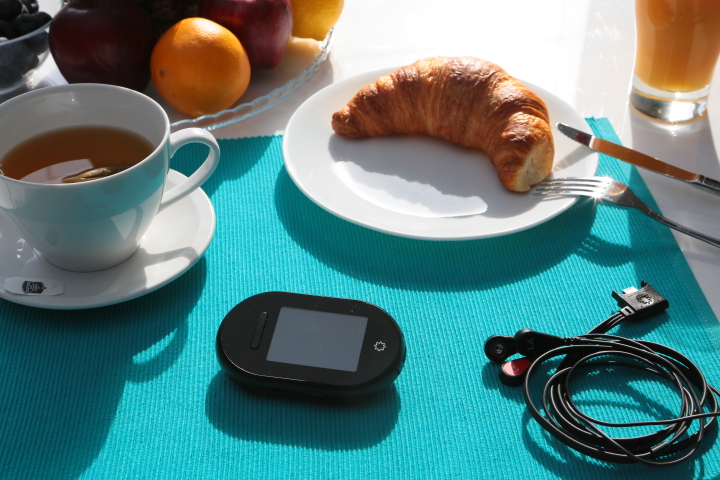

SmallCap Network Community
Join the 200,000+ other members who take full advantage of all that SmallCap Network has to offer. Sign-in or join the community today — FREE!
Apple Watch Heart Monitoring: Too Much Hype?
Earlier this month, the Apple Watch Series 4 having a heart monitoring function approved by the FDA generated a large amount of attention from the media; but is that heart monitoring function all that its cracked out to be and what does it mean for other players in the space?
Earlier this month, the Apple Watch Series 4 having a heart monitoring function approved by the FDA generated a large amount of attention from the media; but is that heart monitoring function all that its cracked out to be and what does it mean for other players in the space?
Earlier this month, the Apple Watch Series 4 having a heart monitoring function approved by the FDA generated a large amount of attention from the media; but is that heart monitoring function all that its cracked out to be and what does it mean for other heart monitoring makers like small cap Biotricity Inc (OTCQB: BTCY)? Note that the Series 4 includes two new FDA-cleared features: An over-the-counter ECG app that monitors heart rhythms and an “irregular rhythm notification feature” that “analyzes pulse rate data to identify episodes of irregular heart rhythms suggestive of atrial fibrillation (AFib).” However, HealthNewsReview.org has a post (What did journalists overlook about the Apple Watch ‘heart monitor’ feature?) reviewing some of the media coverage and was somewhat critical of all the hype. The post noted:
What was the evidence Apple submitted to the FDA to receive clearance?
Only Quartz and STAT indicated that they had reached out directly to the FDA to get data, which we also confirmed. For the ECG app, the FDA said they reviewed data from 588 people, about half of whom had permanent or persistent AFib. The app wasn’t able to classify about 1 out of every 10 rhythm recordings. Of the rest, 98.3% of the people who had AFib were correctly identified as having it. And 99.6% of the time, the app also correctly identified people who didn’t have AFib.
For the irregular rhythm notification feature, the app wasn’t as accurate…
The lengthy blog post went on to conclude by saying:
In contrast to the weak evidence that AFib monitoring results in a real benefit for patients, the Watch is being hyped in an over-the-top way that could lead to patient harms.
To [University of Michigan cardiologist Venkatesh] Murthy, the marketing is deeply problematic–at the event, Apple COO Jeff Williams dubbed the Watch the “ultimate guardian for your health.”
“We’d never accept such broad statements from a pharmaceutical ad and we shouldn’t accept it from marketing for a device,” Murthy said.
So what does the Apple Watch Series 4’s heart monitoring function mean for other players in the market?
Let’s consider the heart related monitoring offerings from Biotricity, Inc (OTCBB: BTCY) – a small cap specialized in remote monitoring solutions for chronic illnesses along with adjacent connected healthcare applications in the diagnostic and post-diagnostic markets. The Company is building a remote patient monitoring platform comprised of three key components tailored to a variety of diagnostic and post-diagnostic applications:
- An IoT hardware with built-in cellular connectivity.
- An embedded Real Time Operating System (RTOS).
- The cloud for analysis and management of both data and devices.
The first step towards building this platform is Bioflux where the Company has tailored IoT hardware, RTOS and the cloud for the diagnostic cardiac market. Bioflux is a high-precision, single-unit mobile cardiac telemetry (MCT) device that provides real-time monitoring and transmission of ambulatory patients’ ECG information. When combined with proprietary software, highly customizable reports and 24/7 monitoring center, the Bioflux system offers complete solution for remote cardiac monitoring that merges seamlessly with physicians’ existing platforms and workflows.
Biotricity is also developing Biolife as a personal heart monitor for consumers at risk for cardiovascular disease (CVD) that will provide the same clinical-grade information on a patient’s heart performance that their doctor uses. This includes information on a person’s ECG, respiration, physical activity, calorie burn, core body temperature and more all in an easy-to-understand format.
Finally, Biotricity is developing “Biopatch” – an ECG patch that will be an extension of the Bioflux device by providing wireless arrhythmia monitoring for patients who are either at risk for, or diagnosed with, certain cardiac issues. Biopatch will offer an alternative to 3-lead systems like Bioflux as while such solutions are still the industry-recommended solution for best diagnostic yield, ECG patches are less cumbersome to wear and easier for patients to use. This makes them ideal for patients with less complicated cardiac conditions.

In other words and while a heart monitoring function is more or less a marketing gimmick for Apple consumers, Biotricity’s products are not really intended for the average consumer who buys Apple products; but for people with or has the potential to suffer from a CVD or heart related issues.
Bioflux was first launched with clients in Texas in the beginning of April this year and has since expanded into four additional states. Biotricity also expects to complete software and hardware prototyping for a Bioflux 2.0 solution and to file a 510(k) clearance application with the US FDA by early 2019. Meanwhile, Biolife is still in the development stages with prototypes expected to be available between the end of Q4 and early 2019 while Biopatch has a targeted release date of Q1 2019.
Join our community to participate in comments, rate stocks, receive daily updates, and more.
SIMILAR ARTICLES
Small Cap Network
?